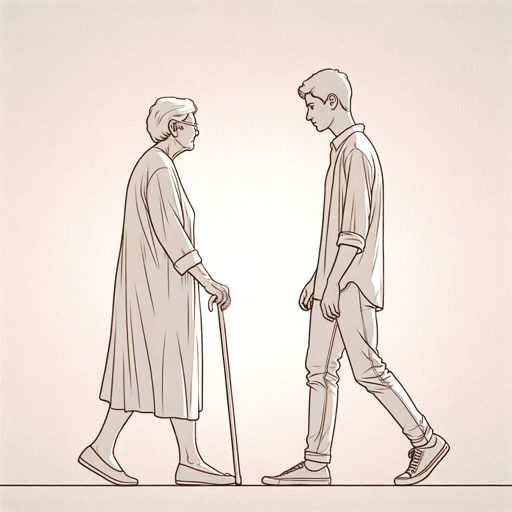48 pages • 1 hour read
Anderson Cooper, Katherine HoweVanderbilt: The Rise and Fall of an American Dynasty
Nonfiction | Biography | Adult | Published in 2021A modern alternative to SparkNotes and CliffsNotes, SuperSummary offers high-quality Study Guides with detailed chapter summaries and analysis of major themes, characters, and more.
Summary and Study Guide
Overview
Vanderbilt: The Rise and Fall of an American Dynasty is a nonfiction book published in 2021 by Anderson Cooper and Katherine Howe. The Washington Post listed it as one of its 50 Notable Works of Nonfiction for 2021. Vanderbilt follows the rise of Cornelius Vanderbilt in the 19th century as the tycoon builds a fortune in the shipping and railroad industries, his son Billy’s success at doubling that fortune, and the influence, infighting, and decline of the family over subsequent generations. It likewise examines the way the Vanderbilts dealt with such extraordinary wealth—how they spent it, fought over it, and shaped capitalism and the Gilded Age in America in the process. Cooper and Howe’s book is considered both biography and history, with a touch of memoir as well in the last chapter with Cooper’s own remembrances.
This guide is based on the first edition hardcover.
Content Warning: The source material includes discussions of suicide.
Summary
The book begins on a personal note, with Cooper explaining in the Introduction the impetus for writing it. In an extended letter to his son Wyatt, Cooper tells him about his famous family. Until the end of his mother’s life, Cooper avoided having much to do with Vanderbilt history, but then realized there were many things he was curious about. Learning more so he might inform his son led Cooper to the research behind the book.
The Prologue jumps ahead to the end of the story, in 2018, when the last Vanderbilt to live in the Newport mansion known as The Breakers had to leave, which foreshadows how the Vanderbilts lost their immense wealth. The first chapter begins Part 1 of the book, entitled “Rise.” It is about Cornelius Vanderbilt, nicknamed “the Commodore,” who started the family on the path to their wealth and fame. The authors describe his upbringing and explain how he got his first business off the ground with the help of his mother.
Chapter 2 starts at the very beginning, examining the origins of the Vanderbilt family in America with Jan Aertsen, the first ancestor to arrive in New York. The third chapter looks at the lives of the Commodore’s sons Billy—the only heir to increase the family fortune rather than diminish it—and Cornelius Jeremiah, a disappointment to his father.
The next two chapters examine the social history of Gilded Age New York. Chapter 4 discusses New York high society in the postbellum era and how the Vanderbilts strove for acceptance. Chapter 5 relates how Alva Vanderbilt, wife of William Kissam Vanderbilt (a son of Billy), helped to put the family in the top tier of society with her famous 1883 ball. Chapter 6 describes how Alva married off her daughter Consuelo to the Duke of Marlborough, a common strategy at the time, as wealthy American families sought greater standing in society by finding impoverished European aristocrats for marriage.
Part 2 is entitled “Fall” and focuses on the decline of the family’s influence and the loss of most of its wealth. Many of the heirs described here were involved in pleasure-seeking rather than money-making pursuits. Chapter 7 is about Alva’s later years after her unprecedented divorce from William in 1895. She married her ex-husband’s best friend, Oliver Belmont, and became a pioneer in the fight for women’s suffrage. The next chapter introduces Alfred Vanderbilt, a son of Cornelius II and Alice, who died when the passenger ship Lusitania was sunk by a German U-boat in 1915. In Chapter 9, the authors relate the story of the 1934 America’s Cup yacht race, won by Harold Vanderbilt, a son of William and Alva.
Chapter 10 introduces co-author Anderson Cooper’s mother, Gloria Vanderbilt, telling the story of her troubled childhood and the sensational custody battle fought between her mother and aunt. The following chapter describes Gloria in the 1960s and 1970s through the lens of her one-time friend Truman Capote, the author and socialite. In the final chapter, Cooper gets personal by describing his experience growing up with his mother and their evolving relationship. He writes about how they grew closer toward the end of her life as he learned more about the Vanderbilt family. The Epilogue reflects on the sweep of Vanderbilt history and the meaning of its rise and fall.
The main themes discussed in the book are The Use and Misuse of Money, The Effects of Fame, and The Myth of the Self-Made American.
Related Titles
By these authors



